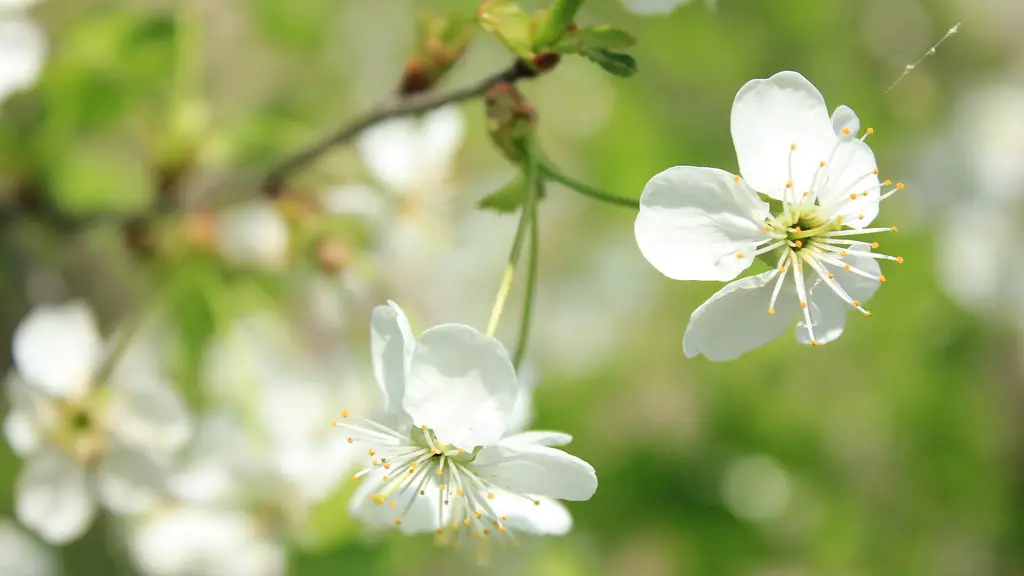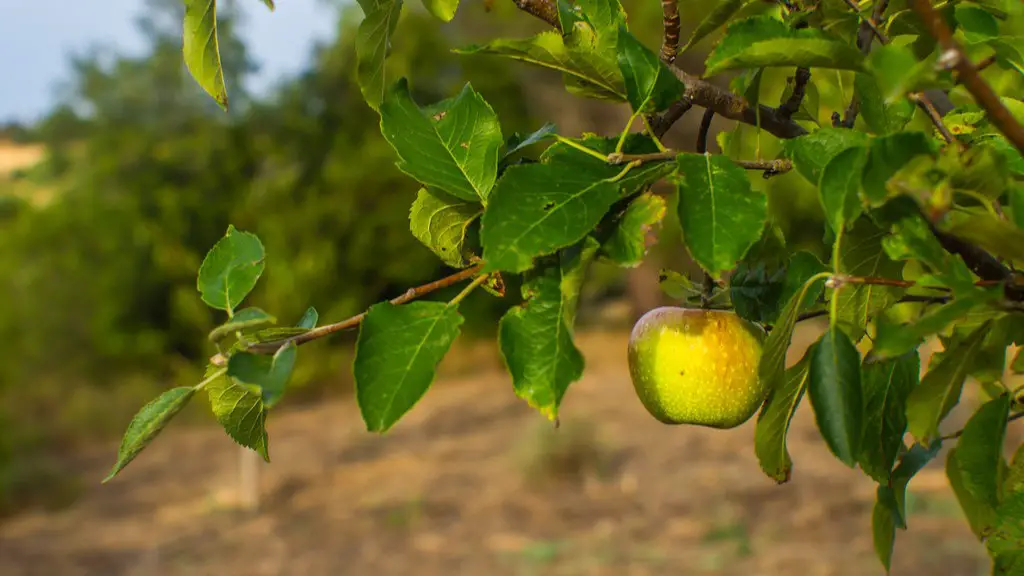A columnar apple tree is a type of apple tree that grows in an upright, column-like shape. This type of tree was first developed in the Netherlands and has since been used in many places across the globe. The columnar shape makes it an ideal choice for city yards with limited space, as it requires little pruning when compared to more traditional apple trees. Additionally, columnar apple trees are disease-, insect- and drought-resistant and can produce a large harvest when compared to other apple trees.
Columnar apple trees differ from traditional apple trees in their upright shape and their thin trunks. Additionally, their limbs are shorter and the tree’s leaf canopy is not as thick. You don’t need to prune or stake columnar apple trees as they grow, instead allowing them to develop in their naturally upright stance. This makes them much lower maintenance than a traditional apple tree. Columnar apple trees won’t take over your yard like regular apple trees can, allowing you to enjoy your outdoor space while reaping the benefits of an apple crop.
Though columnar apple trees have multiple benefits, there are some drawbacks to consider. Because these trees are grafted, they often have less resistance to soil-borne diseases and pests, so you may need to take greater care with soil health and treatment. Additionally, the trees don’t produce as much fruit as traditional apple trees and the size of the fruit is much smaller. Finally, because of their popularity, it’s often hard to find a columnar apple tree in stores.
Columnar apple trees can still provide many benefits to you and your yard. Whether you’re limited on space, need a low-maintenance tree or don’t have the time to monitor a more traditional tree, a columnar apple tree might be a great option for you. They have improved disease resistance and require little pruning, so you’ll still get some great harvests. Plus, because of their popularity, there’s a great deal of research and advice available to help you choose the right variety and get great harvests.
Dwarf Columnar Apple Trees
In addition to standard columnar apple trees, there are varieties available that dwarf the tree’s size. This form of columnar apple tree doesn’t reach the same height as standard columnar trees, but instead stay much smaller. These are great for small yards or if you’re looking for an even lower-maintenance tree. When selecting a dwarf columnar apple tree, you should consider how much sun your yard receives, as these trees require full sun for the best crop production. Additionally, you should review the different varieties available and how much pruning and care the tree requires.
You’ll find that with the proper amount of care, a dwarf columnar apple tree can produce an impressive yield even with its small stature. Because their size and shape, dwarf forms of columnar apple trees can be easily contained in a single planter or a designated corner of your yard. This makes them great for small yards and limited outdoor space. With the right variety and right planting conditions, you can enjoy a plentiful harvest with minimum effort.
Organic Columnar Apple Trees
If you’re looking for a natural, chemical-free option for your columnar apple tree, an organic variety may be a great solution. Organic apple trees are grown using natural methods (e.g. pest control, fertilizer, etc.), so you don’t have to worry about harmful signs entering your tree. The organic fertilizer used to feed these trees is designed to create a healthy environment, providing the ideal amount of nutrients and helpful bacteria to aid your tree’s growth and produce healthy fruit. Additionally, organic apple trees often require less pruning, as they’re better at maintaining their natural shape.
When planting a columnar apple tree, you should consider the variety available to you. It’s important to do your research and determine which type of tree best suits your specific situation, as different varieties have different levels of disease-, insect- and drought-resistance. Additionally, consider whether an organic or dwarf columnar tree may be a better option for your space. Whichever type of tree you choose, with the right amount of care and attention, you can produce a large harvest of delicious, nutritious apples.
Pruning Columnar Apple Trees
Though columnar apple trees do not require much pruning, it’s still important to prune any dead or unhealthy branches. To do this, you can either use pruning shears or a pruning saw. When considering which branches to prune, you should look for any signs of disease, such as discoloration or wilting growth. Additionally, look for any dead or weak branches, as they will affect the overall health and vigor of the tree. You should also consider pruning any overcrowded branches, as this will improve air circulation and light exposure.
In addition to pruning your tree, you should also be careful when selecting the site and soil. A healthy, nutrient-rich environment is key to producing a good apple harvest. Organic soil and compost can provide the right minerals and bacteria to feed your tree, as well as improving overall soil health. Additionally, you should consider how much sun, water and wind your tree will receive and how resistant the variety is to different diseases and insects.
Soil Requirements for Columnar Apple Trees
When selecting the perfect spot for your columnar apple tree, you should consider the type of soil you have. Most apple trees prefer well-drained soil, so you should pick an area of your yard with no puddles or standing water. For an organic approach, you should mix organic material like compost or manure into your soil. This will provide your tree with the right nutrition and bacteria to thrive. Additionally, if you have a soil pH test available, it’s a good idea to use it to see if your soil pH is within the optimal range (6.0-7.0) for apple trees.
Whichever soil type you have, it’s important to make sure there is good drainage. You can do this by checking to see if there are puddles or standing water in your selected area, as this will increase the chances of root rot. Additionally, you should check to see if the soil type has good aeration and you can even add organic materials to improve the soil. By having good soil, your tree will have the best chance to thrive and produce a good crop.
Fertilizing Columnar Apple Trees
Once you’ve got the perfect spot and soil for your columnar apple tree, it’s time to think about fertilizing it. Fertilizing your tree will ensure that it has the necessary nutrients to produce large, healthy apples. You can find different types of fertilizer at most garden stores and online. When choosing your fertilizer, make sure that it’s designed specifically for apple trees, as general fertilizer may not contain the right amount of minerals and nutrients to benefit your tree. Additionally, make sure that it’s organic and free of any harmful chemicals.
Typically, you should fertilize your columnar apple tree every four to six weeks during the growing season to ensure that it has the right nutrients. When applying the fertilizer, you should spread it evenly around the tree’s root system and not too close to the tree’s stem, paying particular attention to the area near the trunk. Make sure that you don’t apply too much fertilizer, as this can lead to nutrient-burn and damage to your tree. By following the manufacturer’s instructions and applying the fertilizer correctly, you’ll ensure that your tree has the nutrients it needs to produce a large crop of apples.



